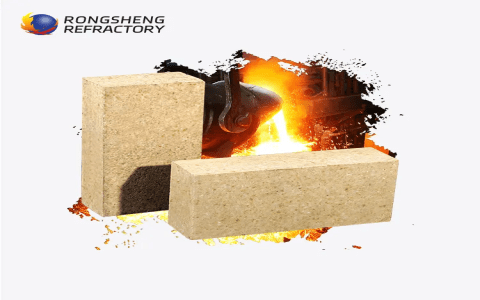Magnesia Bricks: Everything You Need to Know
You ever heard of magnesia bricks? Well, let me tell ya, they ain’t your regular bricks. These ones are somethin’ special, made with a lot of magnesium oxide—more than 90% of it, to be exact. They’re tough, real tough, and that’s why people use ’em in all kinds of heavy-duty places like steel plants and big furnaces.


What Exactly Are Magnesia Bricks?
Magnesia bricks, sometimes called magnesite bricks, are a type of basic refractory material. Now, don’t go gettin’ confused, these fancy words just mean they’re made to withstand a whole lotta heat. They’re made from magnesium oxide (MgO) and have periclase as the main mineral phase, which makes ’em strong against heat and wear. They can handle temperatures that would melt most other things, up to about 2800℃! So, you can imagine, they’re pretty useful in places where they gotta deal with a lot of heat, like in steel furnaces or electric furnaces.
Where Do People Use Magnesia Bricks?
People use magnesia bricks mostly in industries where they need somethin’ that can handle high temperatures. For example, in steelmaking, these bricks are used in the converters, ladles, and even the vacuum degassers. They help keep things running smooth because they don’t break down easily under high heat. Also, you’ll find them in electric furnaces and tunnel kilns. These places get mighty hot, so having the right kind of brick to keep things from melting down is mighty important.
- Steelmaking: In converters, ladles, and vacuum degassers.
- Electric Furnaces: They withstand the heat in big electric melting furnaces.
- Tunnel Kilns: Used in tunnel kilns for firing materials at high temperatures.
Magnesia bricks come in different types too. There’s sintered magnesia brick, which is made by heating the magnesite at a high temperature until it forms a solid, dense brick. Then there’s chemical-bonded magnesia brick, which uses a chemical process to bond the materials together instead of heating ’em up so much. Both types are great for different uses, but the sintered ones tend to last longer and work better in the highest heat conditions.
What Makes Magnesia Bricks So Special?
Well, like I said, these bricks can handle real high temperatures, which is one of the main reasons they’re so popular. Besides that, magnesia bricks are also really good at resisting slag, that nasty, molten stuff that comes out during metal production. So, they protect the furnaces and kilns from getting all damaged up by the heat and the slag.
Magnesia Carbon Bricks


You may also hear about magnesia carbon bricks. These ones are special too, ’cause they combine magnesia with carbon to make ’em even stronger. The carbon helps to improve the brick’s resistance to thermal shock, which means they won’t crack or break when the temperature changes real fast. These bricks are often used in steelmaking, where there’s a lotta heat and the temperature keeps changin’ all the time. The carbon helps keep things from fallin’ apart under the pressure.
Magnesia Chrome Bricks
Another type you might come across is magnesia chrome bricks. These are a bit different, ’cause they mix magnesia with chromium. Now, chromium is another heat-resistant material, so when you combine it with magnesia, you get a brick that can withstand even higher temperatures and resist chemical reactions from the materials inside the furnace. These bricks are great for places like electric arc furnaces and for lining parts of the steelmaking equipment.
How Are Magnesia Bricks Made?
So, you might be wonderin’, how do they make these tough little bricks? Well, like I mentioned earlier, magnesia bricks are mostly made from magnesite, which is a natural mineral. First, they take that magnesite and crush it up real fine. Then, for sintered magnesia bricks, they heat it up to a high temperature until it turns into a solid block. The chemical-bonded ones, on the other hand, don’t need such high heat. Instead, they use a bonding agent to hold the materials together. Once the bricks are made, they’re shaped and sometimes cut into the right sizes for whatever purpose they’re needed for.
Why Are Magnesia Bricks Important?
Magnesia bricks might not be somethin’ you think about every day, but they’re real important in industries that need to deal with heat. Without ’em, steel production and other heavy industries would be a lot harder, not to mention more dangerous. These bricks help keep furnaces and kilns in one piece, protectin’ them from the extreme heat and the molten materials they handle. So, next time you see a big steel factory or an electric furnace, just remember: those magnesia bricks are workin’ hard to make sure everything stays in one piece.
Conclusion


Magnesia bricks might sound like a fancy thing, but they’re just tough ol’ bricks made from magnesite and magnesium oxide that can handle the heat like nobody’s business. They’re used all over the world in steel plants, electric furnaces, and tunnel kilns, where high temperatures are part of the job. If you’re workin’ in any of these industries, or even just curious about how things get made, now you know a little more about the bricks that help keep it all runnin’ smooth.
Tags:[Magnesia Bricks, High-Temperature Bricks, Refractory Materials, Steelmaking, Magnesium Oxide, Sintered Bricks, Electric Furnace, Carbon Bricks, Chrome Bricks, Refractory Materials for Steel Plants]



